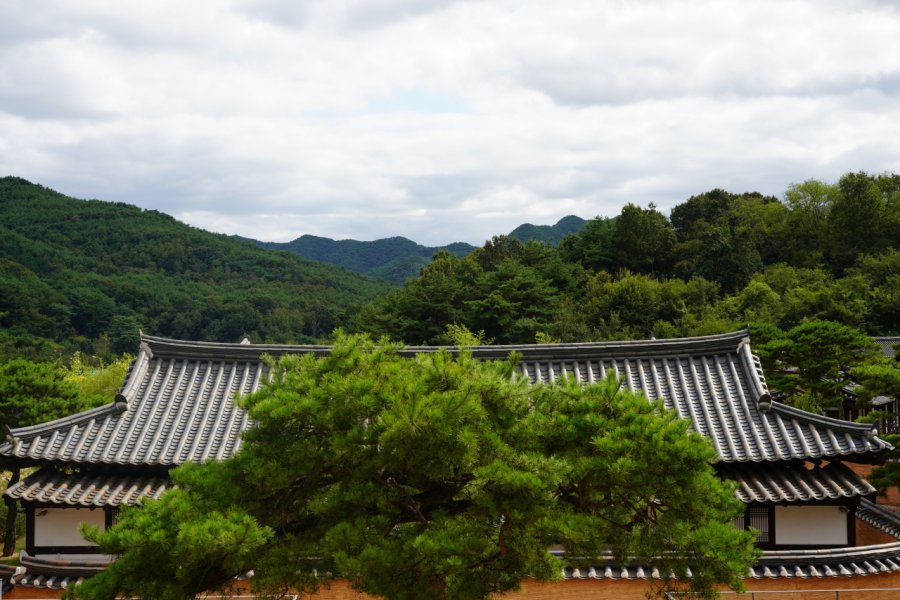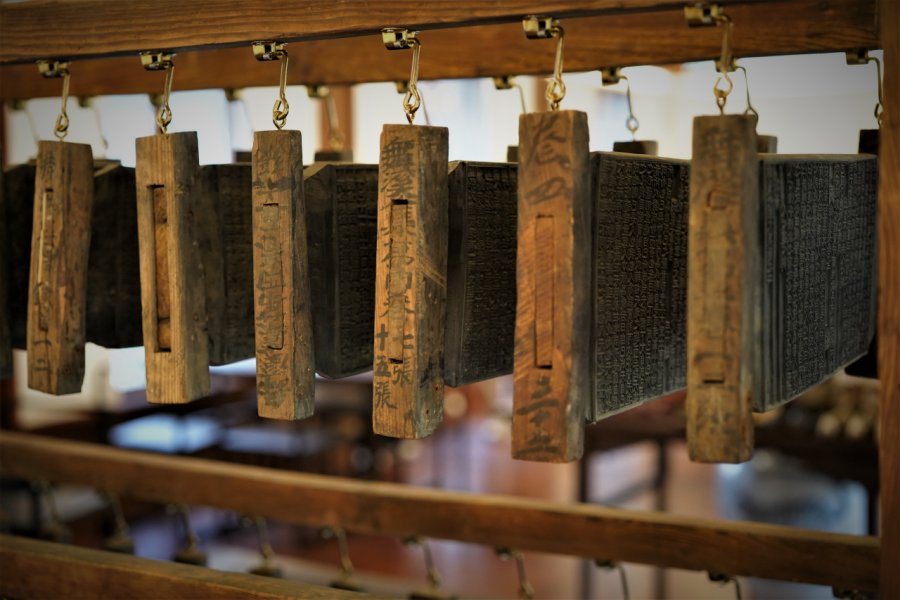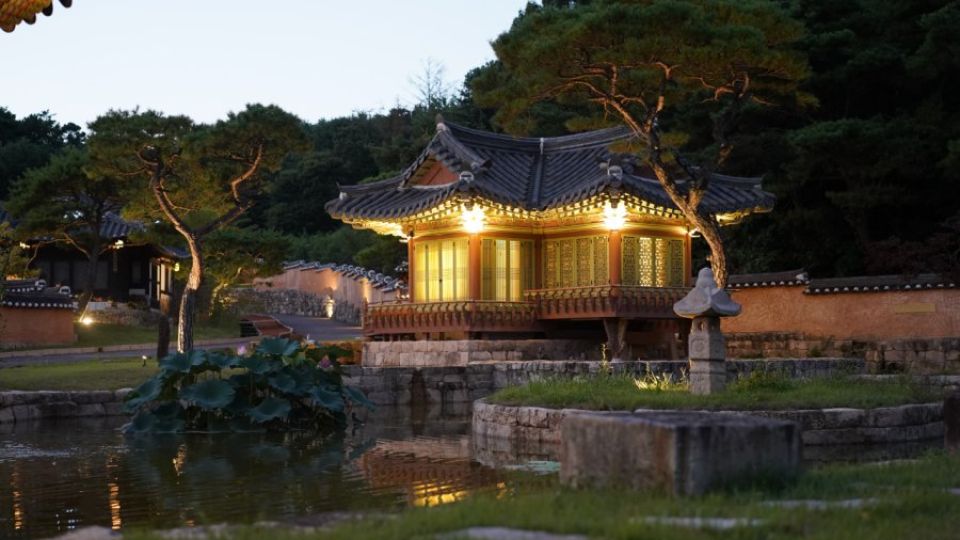September 2, 2024
ANDONG – Andong, a city in the center of North Gyeongsang Province, is a go-to destination for a truly traditional Korean experience where well-preserved cultural heritage abounds.
Ranging from the historic Korean Confucian academy Byeongsan Seowon to the old homes of prominent “seonbi” — virtuous scholars who tried to lead lives of integrity — of the Joseon era (1392-1910), every corner of the city is a feast for the eyes.
A cluster of traditional Korean houses in Andong Hahoe Folk Village beckons tourists, offering an aesthetic backdrop for visitors to capture the moment and take memorable photos.
But, the true charm of hanok is found inside where one can feel the serene atmosphere that results when nature is “borrowed.”
“Koreans show distinct architectural characteristics when designing traditional houses. The key feature is the concept of ‘borrowing’ nature, which means the architect introduces trees, mountains, waterways and the sun into the house in a way that the owner can breathe in nature practically anywhere in the house,” Ahn Young-hwan, the president of Rakkojae, a major hanok hotel brand, told The Korea Herald on Wednesday.

Rakkojae President Ahn Young-hwan speaks with The Korea Herald in the lobby lounge of Rakkojae Hahoe Hanok Hotel in Andong, North Gyeongsang Province on Thursday. PHOTO: THE KOREA HERALD

A scenic view of the mountains can be seen from a room in the hanok located at the highest point of the Rakkojae Hahoe Hanok Hotel site. PHOTO: THE KOREA HERALD
Though many traditional Korean houses at popular tourist destinations allow overseas travelers to take a peek inside, that is not enough to convey the beauty of hanok, especially when surrounded by skyscrapers in bustling cities, according to the president.
Ahn, a 21-year hanok hotel veteran who started his business in Bukchon Hanok Village, felt confident that Rakkojae Hahoe Hanok Hotel in Andong would not only present a one-of-a-kind hanok experience for guests, but also quench his thirst for creating hanok that come into their own.

Stone statues of a couple are displayed in front of the pavilion, Buyongjeong, which is offered to couples on their honeymoon. PHOTO: THE KOREA HERALD

Interior of a Rakkojae Hahoe Hanok Hotel room. PHOTO: THE KOREA HERALD
From the lobby lounge to the hanok-themed rooms, the hotel entertains its guests with pleasant surprises, from the “daedeulbo,” or large-sized wooden cross beams, to the array of colorful “giwa,” traditional roof tiles.
Before unpacking your bag, take time to enjoy some of the antiques and relics that date back hundreds of years in your room, which looks like a personal museum.
Taking a light stroll along a path surrounded by pine trees will be a unique experience, as if you were strolling inside the rear garden of Changdeokgung, a Joseon palace in Seoul.
“As Andong Hahoe Folk Village is right around the corner, I felt that ordinary hanok might not be enough to satisfy hanok lovers. This led us to reference some of the hanok building designs in Changdeokgung like Nakseonjae Hall and the pavilion, Buyongjeong,” Ahn said.

Wood blocks used as xylographs are displayed in the hotel lobby. PHOTO: THE KOREA HERALD
While adapting traditional hanok styles, the hotel had no choice but to give up corridors and elevators that are essential for guests’ convenience.
But a one or two-minute stroll to the nearby rooms and lobby delivers an unexpected opportunity to take emotional refuge surrounded by the chirping of mountain birds from all sides in the morning and singing of grasshoppers at night.
If you want to enjoy the hanok hotel to the fullest, take off your shoes, walk barefoot on the red clay-covered walking trail and enjoy a relaxing sauna break in sauna rooms filled with the aroma of mugwort.
“You can enjoy hanok in countless ways after learning about even the small details in- and outside the room,” Ahn told The Korea Herald.
“Unlike Rakkojae Seoul Bukchon Village Hanok Hotel, where our culture guides are on-hand to share their insights into hanok, the Andong hotel will present foreign language catalogs for international visitors so they can have a better understanding of our traditional Korean houses,” Ahn added, his face beaming.
Rakkojae Hahoe Hanok Hotel is in its soft opening period and is scheduled to open officially to guests in October.


